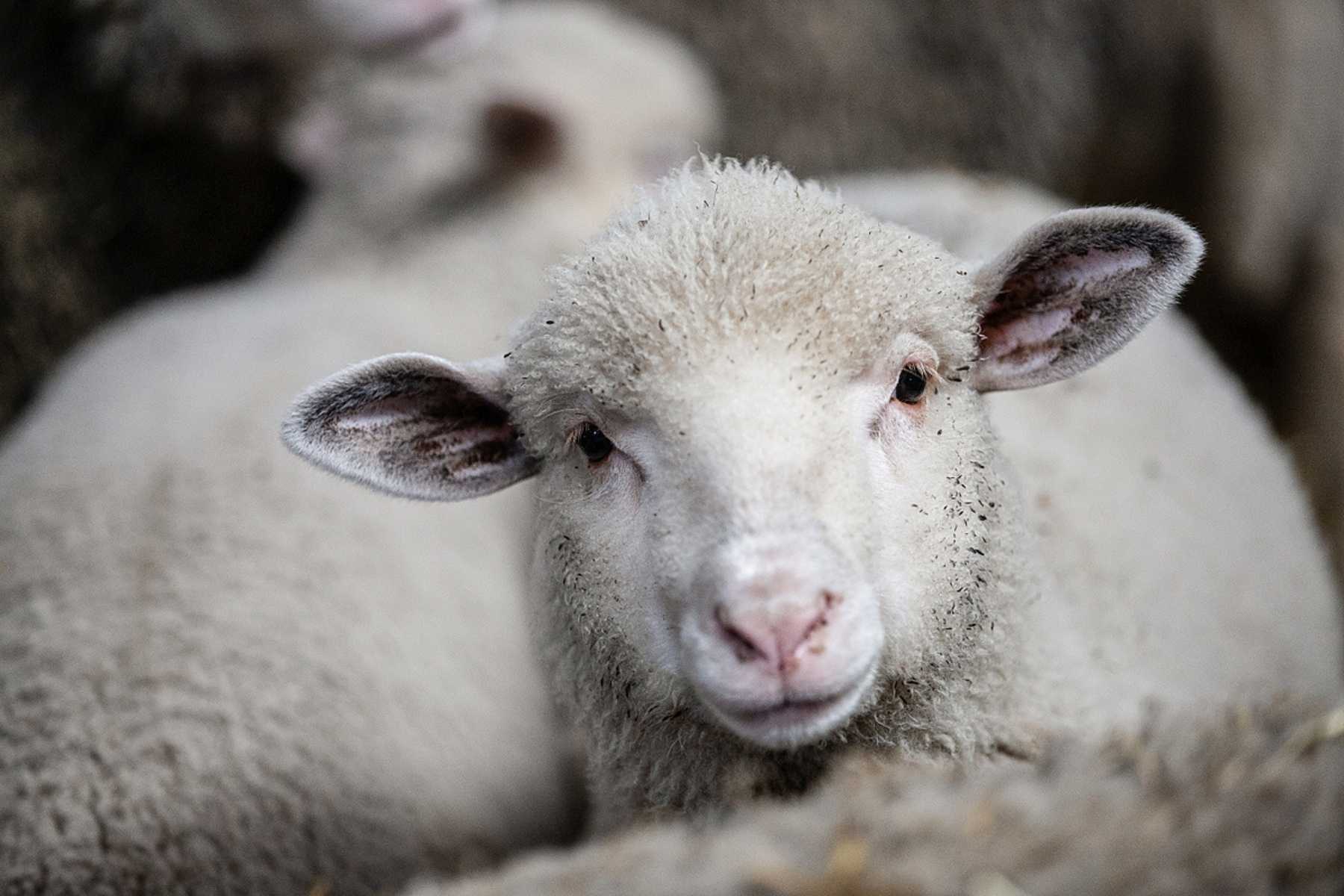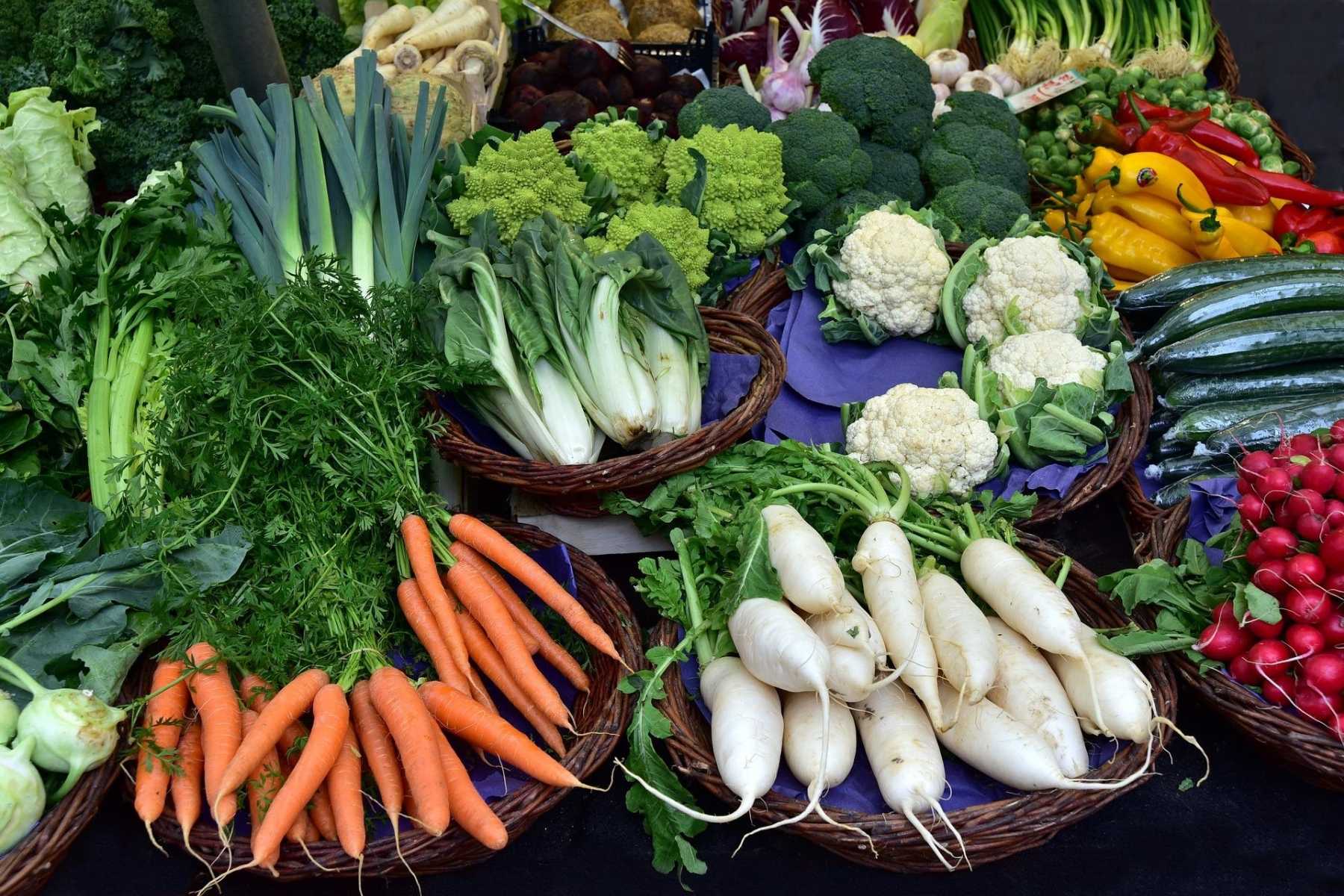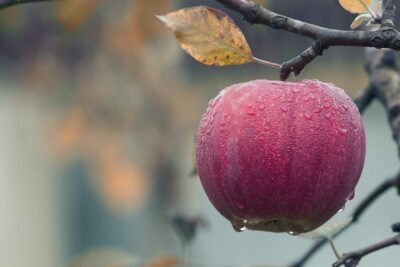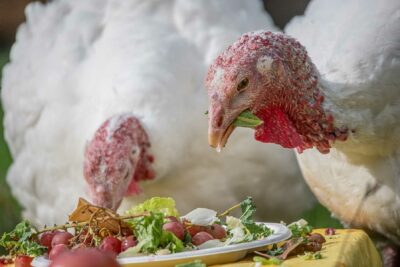From climate emissions to pollution to biodiversity loss, there are many factors to be considered when it comes to analyzing the environmental impacts of our foods.
In recent years, sustainability researchers have painstakingly assessed a wide range of products to see what we should eat more of, and what we would do better to avoid. The summary of this complex research is this: to reduce our impact on Earth, we should always choose plant-based vegan foods instead of meat, milk, and eggs.
12 Worst Foods For The Environment
Given the research done to date, it comes as no surprise that nine of the top 12 worst foods for the planet come from animals.
1. Prawns & Shrimps
More than half of the world’s shrimps are farmed, and this industry is responsible for serious water pollution as well as widespread mangrove destruction. In fact, nearly 40 percent of the world’s mangrove loss has been attributed to shrimp farming. Mangroves are not only essential for supporting marine life, their destruction releases so many climate-changing gasses that farming shrimps is even more harmful to the atmosphere than felling rainforests to provide pasture for cows. According to one study, eating a surf-and-turf dinner of prawn cocktail and steak can be more damaging than driving across America in a petrol-fuelled car.
Shrimp are carnivorous and very hungry. Farming them intensively requires feeding them large amounts of fishmeal and fish oil, and they can eat twice their own body weight in these products. This is not only wasteful and unsustainable, it drives down aquatic wild populations from which their feed is made.
For these reasons, prawns and shrimps are the number 1 worst food for the environment.
2. Beef
Unsurprisingly perhaps, beef is next. This is because there are large emissions produced at every stage of the process, from the land cleared to make way for these large animals to feed, to the transportation, slaughtering, and packaging of their bodies. But the main problem is the vast amounts of methane they produce just by being cows. Plus, beef production is a cause of deforestation, and water pollution, both of which are driving the biodiversity crisis.
3. Chocolate
It feels just a little unfair to include chocolate here because we are comparing climate impact by kilogram, and not many people eat large slabs of chocolate every day in the same way they eat meat. However, even though methane emissions are negligible, dark chocolate still has a big carbon footprint, as cocoa production, especially in west Africa, is a significant driver of deforestation and biodiversity loss.

4. Lamb, Goat & Mutton
As ruminants, sheep and goats produce large amounts of methane as well as significant amounts of other climate-altering gasses. These grazing animals compact and erode the soil, and prevent trees and shrubs from growing. This can mean rainfall is not absorbed as it should be, and floods occur. For these reasons, sheep-heavy landscapes in the United Kingdom have been described by environmental journalist George Monbiot as “sheepwrecked.”
5. Cheese
Since cheese is produced from the milk of ruminants, it is inevitably responsible for a significant amount of climate-altering methane. In terms of all gas emissions, cheese is eight times as damaging as tofu. Cheese is significantly worse for the climate than the milk it is made from because one kilo of cheese requires 10kg of milk. Not that milk is benign! Milk from animals is still more than three times worse for the climate than soy milk.
6. Fish (farmed)
It’s not just shrimp, all fish farming creates large quantities of damaging emissions. Fish farms are appalling places where animals suffer to death from injuries and disease, and large amounts of chemicals are used to try and keep them alive. These chemicals pollute the wild waters locally, and affect free populations. Fish farming is also driving the marine biodiversity crisis, as around 18m tonnes of wild fish are caught each year to make fishmeal and fish oil, of which about 70 percent is intended for farmed fish. Fish farming is bad for the planet. Period.

7. Meat from Pigs
This includes bacon, pork and ham, and all create a disproportionate amount of climate-destroying gasses. The pig farming industry is also a key polluter. The trouble is these large animals produce a lot of waste, which is sprayed onto the land to get rid of it, or it gets washed into waterways when it leaks out of the vast storage facilities used to try and contain it. This slurry is a driver of algal blooms which pollute rivers and oceans, and kill aquatic life. Plus, in hog-rich North Carolina, a study found that those who live near to large pig farms experienced higher rates of infant mortality and deaths from anemia, kidney disease, and tuberculosis. The pollution from pig farms is as bad for people as for the planet.
8. Meat from Chickens, Turkeys & Ducks
The farming of poultry has a devastating impact on the environment—not just the emissions, which are significantly higher than for every plant-based food apart from chocolate—but also in terms of pollution, deforestation, and biodiversity loss. The waste from chicken farms has a profound impact on water quality with rivers dying and turning into ‘pea soup’ as a result. Plus, farmed chickens are fed a processed feed which commonly contains soy grown on deforested lands. For these reasons, chicken farming is driving the destruction of many habitats and is a key cause of the ensuing biodiversity crisis.
9. Eggs
Because farming chickens is so bad for the environment, inevitably eggs are responsible for a significant portion of that damage. A Spanish study recently looked at the widespread eco impacts of the egg industry. It concluded that the feed required for the millions of egg-laying birds was a big problem but so too was the fact that millions of birds are bred and reared all the time to replace those who succumb to the pressures of life in a cage or an intensive egg farm. Egg farming is not only cruel, it is wasteful, and that means there is an environmental price to pay.
10. Rice
And so we come to our first main non-animal food: rice. It is a staple food for millions of people so some impact is to be expected, but its emissions are twice that of wheat, which makes that grain a better option if we have the choice. The main problem with rice is the significant amount of methane produced in the paddies. Even so, its impact, as we already know, is “dwarfed by the impact of animal-based foods.”
11. Sugar
Sugarcane requires a huge amount of water to grow, which means it has a significant impact on biodiversity. It often pollutes freshwater ecosystems with silt and fertilizers, as well as plant matter and the chemical sludge created in the sugar mills. Those contaminants flow out to sea and damage coral reef ecosystems, including The Great Barrier Reef and the Mesoamerican Reef. Sugar is not far behind rice in terms of its climate impact.
12. Cows’ Milk
Our final spot is reserved for the third product created from exploiting cows: their milk. Cows’ milk has three times the climate impact of soy milk, and uses nine times as much land. The amount of feed and water these large animals need has an impact, and so too does the huge amounts of polluting waste they produce. The advice is to choose any plant milk over milk from cows, but the best options for the environment are soy, oat, and hazelnut.

What Type of Meat Is the Worst for the Environment?
While all animal farming causes suffering and harm to animals, it also causes harm to the planet. In terms of the worst eco impacts, these are the meats to avoid:
1. Shellfish:
destroys mangroves and drives climate breakdown
2. Beef:
a driver of deforestation, and climate change
3. Lamb:
destroys habitats while releasing large amounts of methane
4. Fish:
a serious polluter of wild waters which harms aquatic biodiversity
5. Pork:
a polluter of waterways and air which creates serious human health impacts
6. Chicken:
another water polluter; feed is commonly grown on deforested lands
What Foods Are Good For The Environment?
Every mass-produced crop has an impact on the environment, but there is no doubt at all that the least damaging foods are plant foods. In part, this is because we need to grow a lot more plants to feed farmed animals than if we just ate the plant foods ourselves. This is why so much land and water is used to produce meat, milk, and eggs when compared to eating grains, wheat, nuts, and beans. So, all plant-based foods are better for the planet, but these are our top five picks.

1. Citrus fruit
Fruits like oranges, grapefruits, and lemons produce the lowest amount of climate-altering gasses per kilo of any food type studied by Oxford University. They are full of vitamins and flavor, so we should eat lots! And don’t be too concerned about the eco impacts of their transportation. This is a very small amount of the overall environmental cost, and the low carbon footprint of the food itself is far more significant than where it came from.
2. Brassicas
Again, with a very low carbon footprint, vegetables like Brussels sprouts, cabbages, and cauliflower, have around ten times less impact than eggs—which is among the lowest climate impacts of animal-based foods. But also, they’re the best vegetables in terms of water, energy, and land use.
3. Nuts
Nuts are the only food that can have a net positive impact on the climate because nuts grow on trees, and we need more trees to help absorb carbon. Farming with trees is also hugely beneficial for biodiversity and is a crucial part of regenerative agriculture practices. Plus, nuts need less land per 100g of protein produced than almost any animal product.
4. Apples
The humble apple is actually a wonderfood. With very low carbon emissions and a small water footprint, orchards are generally very positive in terms of their eco impact. However, apples tend to get sprayed with chemicals a lot because consumers prefer pristine skins. Buying organic apples wherever possible is the best way to get the best out of apples.
5. Potatoes
Like all vegetables, potatoes have a low carbon footprint (about the same as apples and nuts). They are more sustainable than pasta or rice, and there is no known significant pollution or other damage caused by potato growing.
Conclusion
The foods we eat can have a profoundly negative impact on the world around us: on the climate, the oceans and forests, and all the animals with whom we share this planet. In almost every case, the best planet-friendly foods come from plants, with just one exception: chocolate.
If we choose plant-based foods at every opportunity we will be doing a huge amount to protect our natural world, and our own futures on this beautiful but fragile planet.



